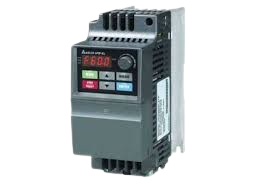Don't wanna be here? Send us removal request.
Text
0 notes
Text

Choosing the right separator is key to keeping your operations running smoothly. Whether you’re dealing with liquid, solid, or gas separation, the right equipment ensures efficiency and reliability. With the perfect separator, you can minimize downtime, improve product quality, and reduce waste, all while keeping your production process streamlined and cost-effective. Invest in the right solution to maintain seamless operations and achieve your industry goals.
0 notes
Text

Fire alarms play a vital role in keeping your workplace safe by detecting fires early, allowing for a quick evacuation, and reducing damage. By warning everyone of danger, they help protect both your team and your property, making them a key part of any safety plan.
#Fire alarm system#Early fire detection#Workplace fire safety#Fire protection solutions#Safety alarm systems
0 notes
Text
Finding Your Way with Comfort: How Radar Helps Make Technology Work for Us?
Radar technology plays an important role in our daily lives. Radar helps us drive safely and keeps the skies clear for travel. Let’s look at how radar affects our daily lives.

Radar stands for "Radio Detection and Ranging." This simple concept allows radar to detect objects’ location, speed, and even their size. Because of its ability to work in all weather conditions, radar is used in many areas of modern life.
Helping Us on the Road
The most common uses of radar in everyday life is in our cars. Advanced driver-assistance systems (ADAS), like adaptive cruise control and collision warning systems, use radar to monitor the road ahead. By detecting vehicles, these systems help drivers avoid accidents and make driving safer and more comfortable.
Keeping the Skies Safe
Radar is an important part of air travel. Air traffic control uses radar to track where planes are and how fast they’re going, helping them navigate safely through busy skies. Pilots also use radar to detect weather conditions, helping them guide clear of danger and keep passengers safe.
Weather Forecasting Made Exact
Weather radar systems can detect rainfall or snow, and track the movement of storms. This information is important for creating exact weather condition, allowing us to prepare for bad weather and stay safe.
Security and Monitoring
Radar is also used in security systems to detect offenders or monitor large areas. Airports, military bases, and even some homes use radar-based systems to keep watch over their surroundings. These systems can detect movement in any weather or light conditions, making them incredibly reliable for security purposes.
Marine Navigation
Out at sea, radar is essential. Ships and boats use radar to navigate through fog, rain, or darkness, assuring they avoid accidents with other vessels or restrictions. This technology is essential for the safety of maritime travel and commerce.
Future of Radar Technology
As technology advances, radar is becoming even more powerful and flexible. From self-driving cars to drones and smart home devices, radar's role is expanding. It’s not just about safety and navigation anymore; radar is helping to create a more connected, efficient, and automated world.
0 notes
Text
0 notes
Text

The Siemens 3Tb47 14-0A Contactor is a robust 3-pole device designed for reliable control and protection of electric motors and power circuits in industrial settings.
0 notes
Text
Aeliya Marine Tech is a trusted provider of high-quality marine and industrial equipment, dedicated to offering reliable solutions tailored to meet your needs. With a broad selection of electrical components, automation systems, and machinery parts, we ensure that every product meets the highest standards of performance and durability. Our team is committed to customer satisfaction, providing expert support and customized solutions that help keep your operations running smoothly and efficiently. Whether you're in the marine industry or managing industrial processes, Aeliya Marine Tech is your partner for dependable equipment and exceptional service.
#Marine equipment supplier#Industrial equipment#Machinery parts#High-quality marine products#Marine industry supplier#Marine equipment provider
0 notes
Text

The Siemens 6SL3224-0BE24-0UA0 Power Supply Module ensures reliable, precise power delivery for your automation systems, enhancing performance and stability.
0 notes
Text
The Telemecanique XCK-M Limit Switch ZCK-M1 10(4)A 380V is a highly reliable and versatile component designed for precise position detection in industrial applications. With its robust construction and compatibility with various machinery, this limit switch ensures accurate and consistent operation, making it essential for safety and automation systems. Engineered for durability, the XCK-M is built to withstand challenging environments, providing dependable performance in controlling and monitoring industrial processes.
0 notes
Text
The Yokogawa YMX-M1 Circuit Board R7035BB-00 is a high-performance component designed for precise control and monitoring in industrial systems. Known for its reliability and accuracy, this circuit board plays a crucial role in ensuring the smooth operation of complex processes. Its robust design and advanced technology make it a trusted choice for industries requiring dependable electronic components. Whether for new installations or upgrades, the Yokogawa YMX-M1 delivers consistent performance and durability.
0 notes
Text

The Hyundai UMC 100 Magnetic Contactor is a dependable device designed for controlling electric motors and other heavy electrical loads in industrial settings. Known for its robust construction and reliable performance, it ensures safe and efficient operation, making it a key component in power distribution and automation systems. The UMC 100 is easy to install and built to last, providing long-term, trustworthy service in demanding environments.
0 notes
Text

The Omron SDV-FH2T Voltage Sensor 24 VDC ESWB.0109.010 is a reliable and precise device designed for monitoring and measuring voltage levels in various industrial applications. Operating at 24 VDC, this sensor ensures accurate detection and response to voltage fluctuations, enhancing system stability and safety. Its compact design and robust construction make it suitable for integration into diverse environments, offering consistent performance and long-term durability. Ideal for automation and control systems, the Omron SDV-FH2T is a dependable solution for voltage monitoring needs.
0 notes
Text
The Power of VFDs: How Variable Frequency Drives Enhance Industrial Performance
In the Scope of industrial automation, efficiency and control are crucial for optimizing performance and reducing operational costs. Variable Frequency Drives (VFDs) have emerged as a powerful tool in achieving these goals. By allowing precise control over motor speed and torque, VFDs enhance industrial performance across a wide range of applications. This blog explores how VFDs work, their benefits, and their impact on industrial processes.
What Are Variable Frequency Drives (VFDs)?

Variable Frequency Drives (VFDs) are electronic devices used to control the speed and moment of electric motors by varying the frequency and voltage supplied to the motor. Unlike traditional motor control systems that operate at a fixed speed, VFDs adjust motor speed dynamically, based on the specific needs of the application.
A VFD system typically consists of three main components:
Rectifier: Converts incoming AC power to DC power.
DC Bus: Filters and smooths the DC power.
Inverter: Converts DC power back to AC power at the desired frequency and voltage.
How VFDs Enhance Industrial Performance

Energy Efficiency: VFDs are famous for their energy-saving capabilities. By adjusting the motor speed to match the load requirements, VFDs reduce energy consumption. For example, in applications such as fans and pumps, where speed adjustments can lead to significant energy savings, VFDs help lower electricity costs and improve overall energy efficiency.
Improved Process Control: With VFDs, operators can fine-tune motor speeds to optimize process performance. This precise control ensures that machinery operates at the optimal speed for various production stages, leading to enhanced product quality and reduced wear and tear on equipment.
Extended Equipment Life: VFDs reduce mechanical stress on motors and associated components by allowing gradual acceleration and deceleration. This minimizes the impact of sudden starts and stops, extending the lifespan of equipment and reducing maintenance needs.
Reduced Operational Costs: By improving energy efficiency and reducing maintenance requirements, VFDs help lower overall operational costs. The initial investment in VFD technology is often offset by long-term savings in energy bills and maintenance expenses.
Enhanced Flexibility: VFDs offer flexibility in industrial applications, allowing for easy adjustments to motor speed and performance. This flexibility is beneficial for processes that require variable speeds or frequent changes in operational conditions.
Noise Reduction: VFDs can help reduce noise levels in industrial environments by controlling motor speed more smoothly. This is particularly useful in applications where noise reduction is a priority, such as in HVAC systems and manufacturing facilities.
Improved Safety: By providing smoother starts and stops, VFDs contribute to safer operation. This gradual control reduces the risk of mechanical failures and accidents associated with abrupt changes in motor speed.
Applications of VFDs
VFDs are employed across various industries, including:
Manufacturing: For controlling transport belts, pumps, and fans.
HVAC: In heating, ventilation, and air conditioning systems to regulate airflow and temperature.
Water Treatment: To manage pumps and motors in water and wastewater treatment facilities.
Mining: For controlling crushers, mills, and other mining equipment.
Future Trends in VFD Technology
As technology continues to advance, VFDs are becoming increasingly sophisticated. Future trends include:

Integration with IoT: Enhanced connectivity for remote monitoring and control.
Advanced Analytics: Data-driven insights for predictive maintenance and process optimization.
Improved Energy Efficiency: More efficient designs and energy-saving features.
0 notes
Text
Spare parts are essential components that ensure the smooth operation and longevity of machinery and equipment across various industries. They include a wide range of items such as gears, bearings, seals, valves, and electronic components, each designed to replace worn or damaged parts. Regular use of spare parts in maintenance routines helps prevent unexpected breakdowns, reduces downtime, and maintains the efficiency and safety of operations. High-quality spare parts contribute to extending the lifespan of equipment, offering cost-effective solutions by minimizing the need for complete replacements. Keeping an inventory of critical spare parts is crucial for ensuring operational continuity and rapid response to any equipment failures. Prices should be checked on the day of purchase.
0 notes
Text
HVAC and refrigeration systems rely on various spare parts to ensure optimal performance and longevity. These spare parts include compressors, condensers, evaporators, thermostats, filters, fans, and expansion valves, all essential for maintaining temperature control and air quality. High-quality components ensure energy efficiency, reduce downtime, and extend the life of the system. Whether for routine maintenance or emergency repairs, selecting the right spare parts is crucial for maintaining system reliability and performance. Prices should be checked on the day of purchase.
0 notes
Text
A control unit is a crucial component in various industrial and electronic systems, responsible for directing and managing the operations of the entire system. It interprets and processes input signals, then generates the necessary output commands to control devices, machinery, or processes. By coordinating actions according to preset instructions or real-time conditions, the control unit ensures precise and efficient operation, optimizing performance and maintaining stability within the system. Whether in automation, robotics, or data processing, the control unit is key to achieving seamless and reliable functionality.
0 notes